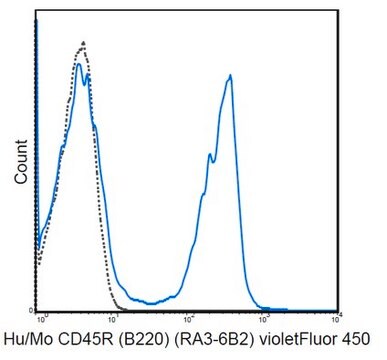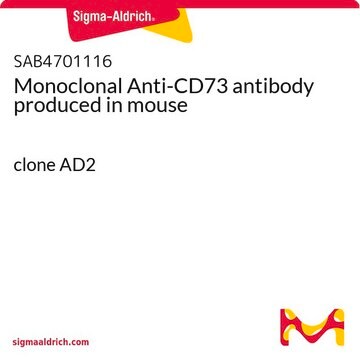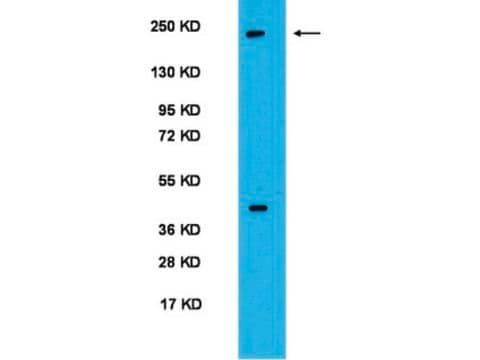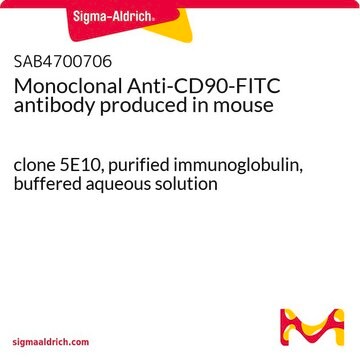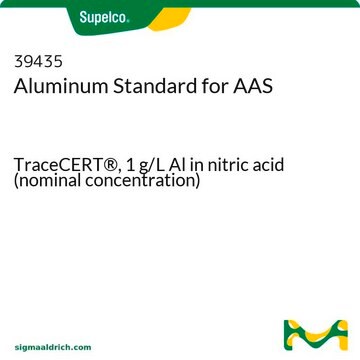MABT117
Anti-Endoglin (CD105) Antibody, clone 44G4
clone 44G4, from mouse
Sinônimo(s):
Endoglin, CD104
About This Item
Produtos recomendados
fonte biológica
mouse
Nível de qualidade
forma do anticorpo
purified immunoglobulin
tipo de produto de anticorpo
primary antibodies
clone
44G4, monoclonal
reatividade de espécies
human
técnica(s)
flow cytometry: suitable
immunohistochemistry: suitable
immunoprecipitation (IP): suitable
Isotipo
IgG1κ
nº de adesão NCBI
nº de adesão UniProt
Condições de expedição
wet ice
modificação pós-traducional do alvo
unmodified
Informações sobre genes
human ... ENG(2022)
Descrição geral
Imunogênio
Aplicação
Immunoprecipitation Analysis: A representative lot was used by an independent laboratory to IP Endoglin from HOON, NALM-6, 3104, 3161, HL-60, U-937, EM-3 and KG-1a cells (Gougos, A., and Letarte, M. (1988). J Immunol. 141(6):1925-1933).
Cell Structure
Adhesion (CAMs)
Qualidade
Flow Cytometry Analysis: A 1:200 dilution of this antibody detected Endoglin in HUVEC cells.
Descrição-alvo
forma física
Armazenamento e estabilidade
Nota de análise
HUVEC cells
Exoneração de responsabilidade
Not finding the right product?
Try our Ferramenta de seleção de produtos.
Código de classe de armazenamento
12 - Non Combustible Liquids
Classe de risco de água (WGK)
WGK 1
Ponto de fulgor (°F)
Not applicable
Ponto de fulgor (°C)
Not applicable
Certificados de análise (COA)
Busque Certificados de análise (COA) digitando o Número do Lote do produto. Os números de lote e remessa podem ser encontrados no rótulo de um produto após a palavra “Lot” ou “Batch”.
Já possui este produto?
Encontre a documentação dos produtos que você adquiriu recentemente na biblioteca de documentos.
Artigos
PLTMax® Human Platelet Lysate (hPL) is a superior serum-free and xeno-free media supplement alternative to fetal bovine serum (FBS) for human mesenchymal stem cell (MSC) cultures.
Nossa equipe de cientistas tem experiência em todas as áreas de pesquisa, incluindo Life Sciences, ciência de materiais, síntese química, cromatografia, química analítica e muitas outras.
Entre em contato com a assistência técnica

